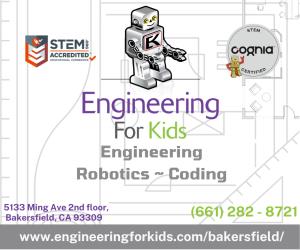Mar 01, 2016
Since time eternal, people have been transferring skills from one generation to another in some form of apprenticeship. In the 8th century B.C., the Babylonian King Hammurabi created a code of 282 laws, one of which provided that artisans may teach their crafts to youths in exchange for labor. When apprenticed youth achieved the status of craft workers, they became important and contributing members of society. The word apprentice comes from the old French “aprentiz” meaning “someone learning” and from Latin apprehendere meaning for someone to “apprehend” or learn.
Prior to graduating and being release from their apprenticeship, apprentices were required to make a “masterpiece” or test piece. The sample of work was then submitted for inspection by a group of masters, so the apprentice could gain guild recognition of their status as “freemen.” Shoemaker apprentices were required to make shoes; glassblowers created something of fashion; and in the textile trade, apprentices were required to produce several pairs of stockings before being freed. Our children do the same in school by passing tests before they move on to the next grade level.
Nowadays, apprentices are members of a modern work force as they train on the job, in the military, in one of the trade industries, and even in the classroom as student teachers. The apprentice is supervised, and the tasks that he is required to learn are specifically lined out to assure that those in training will eventually become skilled workers. Who are the apprentices currently being supervised and trained by you? They are your children.
Even as toddlers, we can expect our children (apprentices) to begin to learn (apprehend) from us and contribute to the home. “Let’s clean up these toys and put them in the basket,” a parent may say to a toddler who is beginning to learn the clean-up process. Our job as a parent is to train our children, so when they reach adulthood, they are capable individuals. No matter the chore, each is better learned by having the child work along side the parent. It is every parent’s job to make sure his “apprentice” gains all the skills necessary to survive and flourish in our society.
In the beginning, a child will learn best by working along side his parent (master). As the master, you teach, guide, and encourage; however, the most important thing is that you are constantly there to make the learning possible. Your ongoing guidance is crucial to the child/apprentice learning over time. The more methodical and constant the learning, the more the child/apprentice incorporates the teachings into his character. As the child/apprentice matures, he eventually requires less supervision, because the parent/master was there so consistently in the beginning offering a role model as well as guidance. This is the most effective manner of learning: slow and steady. The academic experience is quite similar. The child is not just offered a book and told to “learn it.” He attends class day in and day out, year after year, with repeated access to a teacher/master.
As the parent/master, you have the unique opportunity to pass along all your knowledge and skills to your child/apprentice. As a result, your child “earns” his keep, just like in the old days. Your continued presence in working at tasks with him is essential to the child learning the task successfully. Include your child in all facets of household chores while working along side the child teaching, guiding, and encouraging. Your child will begin to feel worthy as he gains skills, and with your help, he will eventually “master” the world.
Prior to graduating and being release from their apprenticeship, apprentices were required to make a “masterpiece” or test piece. The sample of work was then submitted for inspection by a group of masters, so the apprentice could gain guild recognition of their status as “freemen.” Shoemaker apprentices were required to make shoes; glassblowers created something of fashion; and in the textile trade, apprentices were required to produce several pairs of stockings before being freed. Our children do the same in school by passing tests before they move on to the next grade level.
Nowadays, apprentices are members of a modern work force as they train on the job, in the military, in one of the trade industries, and even in the classroom as student teachers. The apprentice is supervised, and the tasks that he is required to learn are specifically lined out to assure that those in training will eventually become skilled workers. Who are the apprentices currently being supervised and trained by you? They are your children.
Even as toddlers, we can expect our children (apprentices) to begin to learn (apprehend) from us and contribute to the home. “Let’s clean up these toys and put them in the basket,” a parent may say to a toddler who is beginning to learn the clean-up process. Our job as a parent is to train our children, so when they reach adulthood, they are capable individuals. No matter the chore, each is better learned by having the child work along side the parent. It is every parent’s job to make sure his “apprentice” gains all the skills necessary to survive and flourish in our society.
In the beginning, a child will learn best by working along side his parent (master). As the master, you teach, guide, and encourage; however, the most important thing is that you are constantly there to make the learning possible. Your ongoing guidance is crucial to the child/apprentice learning over time. The more methodical and constant the learning, the more the child/apprentice incorporates the teachings into his character. As the child/apprentice matures, he eventually requires less supervision, because the parent/master was there so consistently in the beginning offering a role model as well as guidance. This is the most effective manner of learning: slow and steady. The academic experience is quite similar. The child is not just offered a book and told to “learn it.” He attends class day in and day out, year after year, with repeated access to a teacher/master.
As the parent/master, you have the unique opportunity to pass along all your knowledge and skills to your child/apprentice. As a result, your child “earns” his keep, just like in the old days. Your continued presence in working at tasks with him is essential to the child learning the task successfully. Include your child in all facets of household chores while working along side the child teaching, guiding, and encouraging. Your child will begin to feel worthy as he gains skills, and with your help, he will eventually “master” the world.









